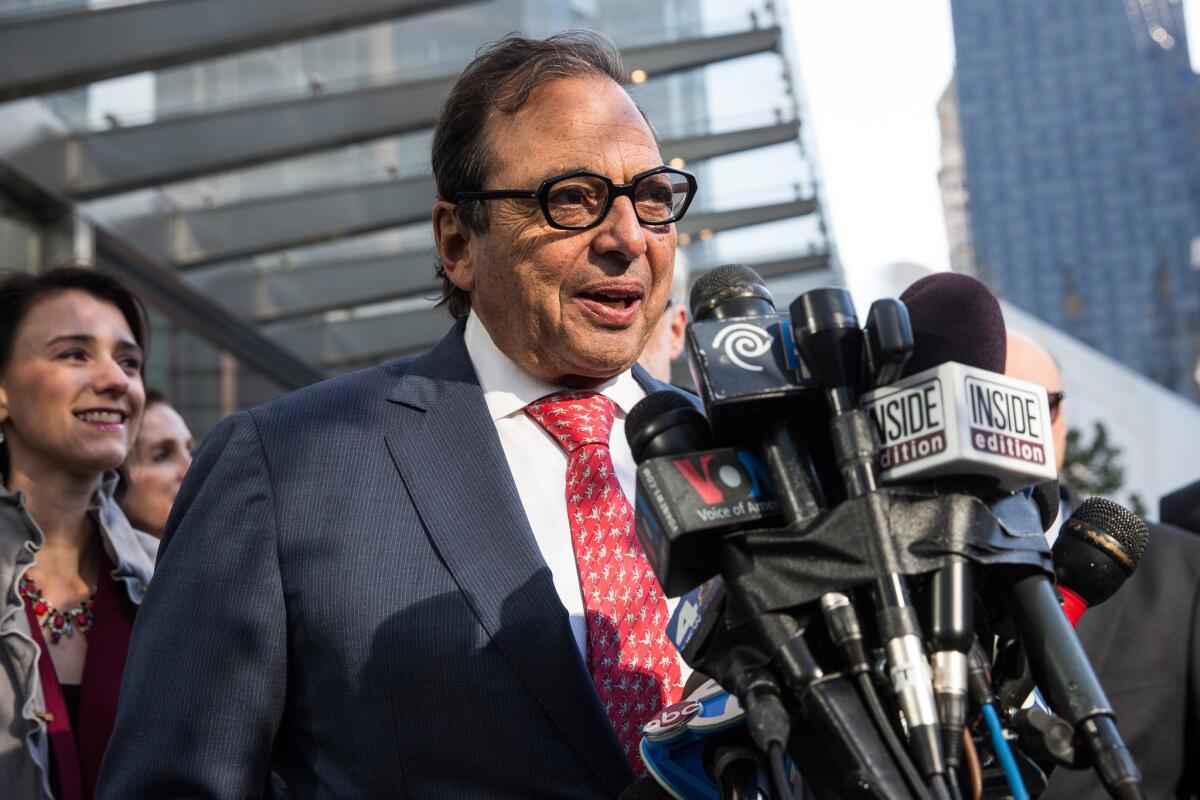Who are the Dursts? Shining a light on the New York real estate kingpins

- Share via
The arrest of Robert Durst in connection with the 2000 murder of a former friend, Susan Berman, is shining a light into the private financial world of a family dynasty that is one of New York’s elite.
The Durst family is part of a closed circle of real estate owners and operators with roots dating to the early 20th century who still dominate Manhattan’s prime office market today.
“In many ways they are the kingpins of the private families,” said Peter Slatin, a longtime New York real estate observer who runs the Slatin Group consulting firm.
The patriarch, Joseph, arrived as an immigrant from Poland in 1901. With savings from his job as a tailor, he bought his first commercial property, an office building on 34th Street, in 1915.
Joseph’s son Seymour joined the firm in 1940 and, with help from his brothers, Roy and David, greatly expanded the family’s office footprint in Manhattan’s midtown, driving a series of landmark developments. Seymour’s sons, Robert and Douglas, eventually joined the company.
Douglas, who was promoted by his father over his troubled older brother, 71, is considered a savvy operator. Unlike his outspoken father, though, Douglas, 70, eschews the limelight.
“He doesn’t overblow his own horn,” Slatin said. “He lets his family’s activities in New York speak for itself.”
In the early 1990s, the privately held Durst Organization made a key investment in a corner of Times Square and landed a key tenant, publisher Conde Nast, that brought cachet to a troubled redevelopment area that had not been considered a prime market for office tenants.
Today, 4 Times Square is an anchor for the area’s resurgence and part of the Durst company’s 13-million-square-foot office portfolio.
A short distance to the east on 42nd Street is One Bryant Park, a Durst building that is the New York headquarters for Bank of America Corp. The real estate firm also owns key properties nearby.
Durst Organization also owns 1,250 high-end apartments and is developing 1,100 more units, all in Manhattan. A few years ago, the firm bought the debt of a building in a then-unglamorous area of midtown known as Koreatown. It now is set to open a mixed-use development with 375 apartments, where two-bedroom units will be priced at about $8,500 a month, said Jordan Barowitz, a company spokesman.
The family is entrenched in the company. Douglas runs it with his cousin, Jody. Two of Douglas’ children, Alexander and Helena, work as vice presidents, along with other members of the extended Durst family.
Soft-spoken and courtly, Douglas Durst takes a special interest in environmental projects and owns one of the largest organic farms in New York State.
On a tour of One Bryant Park given to a journalist shortly before it opened a decade ago, Durst pointed with pride to the building’s many energy-conservation features. The building was the first high-rise office tower given “platinum” status for environmentalism by the U.S. Green Building Council.
Like other top New York real estate families — the Rudins, the Roses, the Resnicks among them — the Dursts are deeply involved in the city’s philanthropic and social scene. Douglas Durst, a graduate of UC Berkeley, is a patron of the theater and sits on the board of two theater companies as well as the New School.
He also is a director of the Real Estate Board of New York, which is one of the most powerful and influential players in New York City’s government.
What separates the Durst family from its private real estate peers is that it hasn’t strayed from the New York market and remains overwhelmingly concentrated in midtown, the most expensive office market in the U.S.
In 2010, however, it ventured downtown and won the right to invest $100 million in One World Trade Center, the long-delayed and troubled project to replace the twin towers destroyed in the terror attacks of 2001.
In winning the bid, Durst became a co-investor with the Port Authority of New York and New Jersey, the bi-state agency that built the giant office complex in the 1960s and struggled to redevelop the area. Durst has taken over responsibility for construction, leasing and management of the 1,776-foot tower.
Downtown has long been considered a second-tier market in the city, but Durst was instrumental in bringing a prime tenant to the trade center project: Conde Nast. The publishing firm’s quarters at Times Square will be leased to new tenants, Barowitz said.
Twitter: @deanstarkman
More to Read
Inside the business of entertainment
The Wide Shot brings you news, analysis and insights on everything from streaming wars to production — and what it all means for the future.
You may occasionally receive promotional content from the Los Angeles Times.











